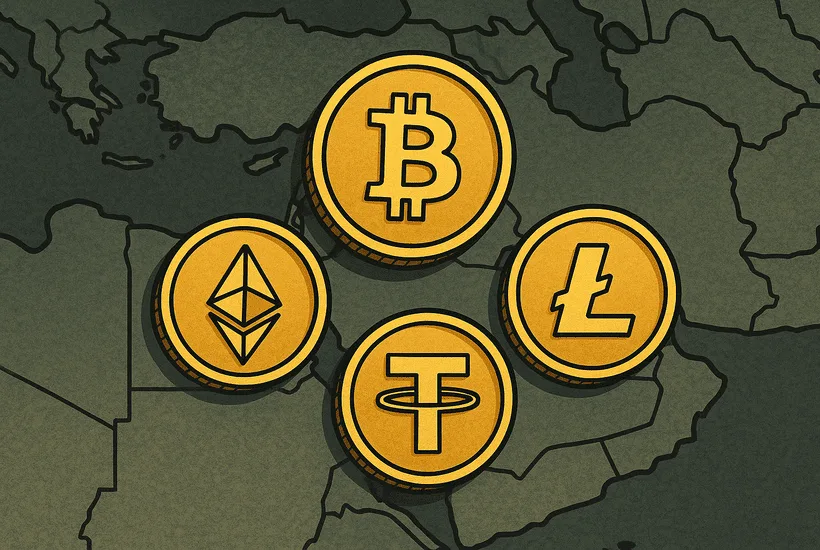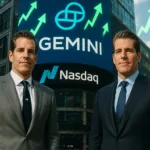The report below is composed by Mining Grid, a Dubai-based blockchain infrastructure company.
Executive summary
The Middle East has emerged as one of the fastest-growing cryptocurrency hubs globally, with crypto inflows totalling $338.7 billion between July 2023 and June 2024. This represents an 11.73% year-on-year increase, accounting for 7.5% of global transaction volume, according to the latest Middle East Crypto Outlook 2025 report by Mining Grid. This growth is primarily being driven by institutional investment and youth adoption, positioning the region as a maturing and increasingly influential player in the global crypto economy.
The rise of forward-thinking regulation in the UAE, infrastructure-backed mining in Oman, and digitally-native adoption in Saudi Arabia reflects the region’s unique blueprint. Looking ahead, more structured licensing frameworks, sustainable mining projects, and youth-centric platforms are expected to accelerate participation across all layers of the ecosystem.
Newsletter
Get weekly updates on the newest crypto stories, case studies and tips right in your mailbox.
MENA market snapshot (2023–2024)
- Crypto Inflows: $338.7 Billion (+11.73% YoY)
- Global Share of Volume: 7.5%
- Institutional Transactions: 93% of total volume
- UAE: $34B inflows, +42% YoY
- Saudi Arabia: $47.1B inflows, +153% YoY
- Oman: $1.1B+ in green mining infrastructure investments
- ETF Inflows Globally: $17B
- Stablecoin Usage: 66% of global on-chain transactions
- Youth Interest (UAE): 74% of adults aged 25–34 show active interest in crypto
Macroeconomic overview and outlook
The report suggests that the MENA region is moving beyond early-stage experimentation into institutionalized crypto participation, supported by rising ETF flows, tokenized asset strategies, and robust regulatory clarity. Notably:
- 83% of regional institutions plan to increase crypto allocations by 2025.
- 59% expect to allocate over 5% of AUM to digital assets.
- Key actors like Mubadala and Abu Dhabi MGX have invested in major platforms such as IBIT and Binance, signaling long-term strategic alignment.
Furthermore, Saudi Arabia and the UAE are aligning national visions like Vision 2030 and economic diversification goals with the crypto agenda, integrating blockchain into infrastructure, financial systems, and investment vehicles.
Country highlights
United Arab Emirates
With progressive regulatory frameworks by VARA, ADGM, and DFSA, the UAE is leading the regional charge. It received $34 billion in crypto inflows, up 42% YoY, and offers 0% capital gains tax on crypto. Major exchanges such as Binance, Bybit, and Crypto.com now have regional headquarters in the UAE. Youth engagement is unparalleled, with 74% of adults aged 25–34 showing active interest in crypto.
Saudi Arabia
Posting a 153% YoY surge, Saudi Arabia’s $47.1 billion in crypto inflows makes it the fastest-growing market in the GCC. 63% of its population is under 30, and platforms like TikTok and YouTube are shaping financial behaviors. Crypto is becoming aspirational, with 76% of users having less than one year of experience, revealing a new wave of first-time investors.
Oman
Oman is focusing on green, infrastructure-backed mining, with over $1.1 billion invested in sustainable crypto operations. As part of Oman Vision 2040, this includes solar-powered mining, SWAC cooling, and regional partnerships. It is strategically positioning itself as a low-emission mining hub between the Gulf and the wider MENA region.
Youth, culture, and social media influence
The youth-led crypto movement is one of the most defining forces in the region. In the UAE and Saudi Arabia:
- 21% of youth plan to trade crypto in the next year
- 45% are concerned about misinformation
- Top discovery platforms: WhatsApp, TikTok, Instagram, YouTube
Mining Grid’s “Cores Racing” and “Mining Race” apps are examples of how gamified, mobile-first crypto experiences are attracting tens of thousands of young users. These platforms encourage social learning and hands-on engagement with mining and DeFi tools.
Infrastructure, mining & innovation
Crypto mining, traditionally criticized for high energy consumption, is now being reframed as an infrastructure investment opportunity. Key trends include:
- 34% of mining hardware buyers are under 35
- Demand for cloud mining under $500
- Increased use of renewables, solar, and nuclear energy (e.g., Barakah Plant in UAE)
- Public-facing mining showrooms now operating in Dubai
These trends show how the region is transforming crypto mining into a sustainable, inclusive, and public-facing domain.
Forecast for 2025
Mining Grid forecasts continued growth and regional leadership in the crypto economy:
| Trend | Forecast | Implication |
| Regulatory | More countries to adopt UAE-style frameworks | Greater institutional trust |
| Institutional | Allocations to double by mid-2025 | Growth in ETFs and custody services |
| Mining | Green infrastructure to dominate | Oman and UAE to lead sustainability |
| Youth | Over 500,000 daily traders in UAE by Q4 2025 | Mobile-first, gamified platforms will win adoption |
Geopolitics & strategic stability
Volatile economies like Turkey, Egypt, and Lebanon are turning to P2P trading and stablecoins (e.g., Turkey’s 67% stablecoin usage amid 42% inflation). In contrast, GCC nations like UAE, Saudi Arabia, and Oman are becoming “crypto stability zones,” offering safe havens for displaced capital and businesses through structured ecosystems and renewable energy supply chains.
Conclusion
The Middle East is no longer observing the global crypto movement it’s actively shaping it. With strategic investments, forward-looking policies, youth-led engagement, and institutional commitment, the region is crafting its own decentralized future.
The future of mining belongs to communities not just corporations. The next generation of miners won’t come from data centers. They’ll come from phones, campuses, and every country ready to build on its own terms.
Disclaimer
This content is provided by a third party. Coin Headlines does not endorse any product or service mentioned in this article. Users must do their own research before making any financial decisions.










